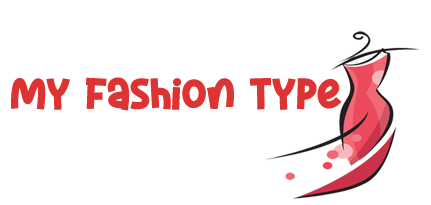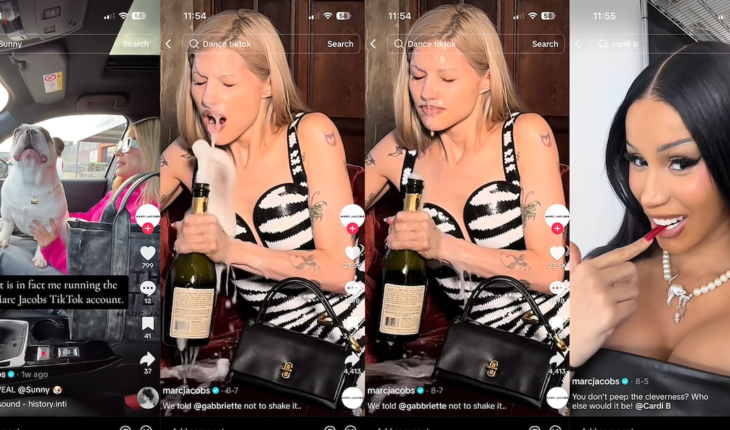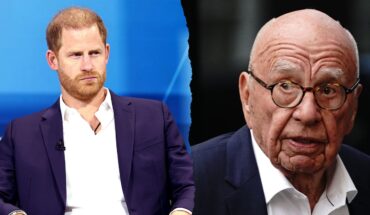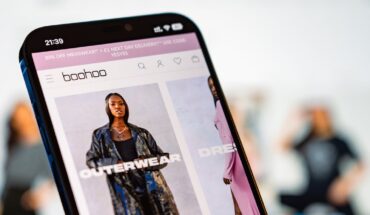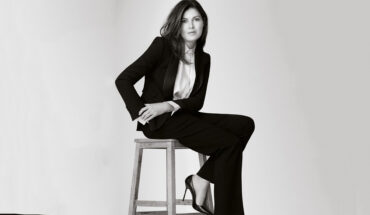Download the white paper Commercialising the Zeitgeist: Crafting a Successful TikTok Strategy
The objective of this white paper is to equip the international fashion, luxury and beauty industries with strategic insight on executing effective TikTok strategies. From brand identity and community engagement to organic and paid campaigns, creator collaborations, commerce solutions, user-generated content (UGC) and a host of other commercial considerations, BoF has analysed and investigated best practices from across the industry and interviewed independent experts, brand executives and TikTok leaders.
Finding Brand-Consistent Content Creators
Over 60 percent of users agree that TikTok creators make them more interested in trying a new product, according to a study by Lumen in 2022, commissioned by TikTok. However, choosing the right content creator is critical — 55 percent of TikTok users say they are more likely to trust brands after learning about them from TikTok creators, according to a study by Material for TikTok in 2022.
 Opens in new window
Opens in new window“Creators are always closer to the nerve of what is going to [be a] hit with people,” says McCorquodale. “They always have a better instinct for what is going to drive audience engagement; what’s going to drive interest.”
McCorquodale cites second-hand marketplace Vinted’s approach, noting the role that content creators have played in its success as a platform by “making the process of doing their Vinted — sending clothes to their buyers on Vinted — look habitual and easy. […] That is how you will get consumer adoption, in my opinion.”
“[Creators] are the experts on the platform. They help brands natively tap into trends and the various communities and story tell in a way that is bespoke to these unique communities,” says Cleary.
Sixty-six percent of TikTok users also like when brands partner with a variety of creators and 42 percent agree content from a variety of creators makes the brand feel more relatable, according to a study conducted by Alter Agents for TikTok in 2023.
“It’s about finding your people […] in new ways, [like how] a fashion critic could drive you to a brand,” adds Craft. “Folks like Charles Gross, who talks about Hermès, may be your entry point into wanting to explore a conversation with a luxury brand.”
“You have the borrowed equity of the creators. You have a different voice within different communities on TikTok,” says Wallengren. “That’s been our strategy with TikTok — that more bespoke niche, [with] multiple tones of voice. A lot of the time, [we’re] working with people over and over again.”
For merchants who use TikTok Shop, its affiliate programme also gives brands flexible options to work with creators, while giving creators a new way to monetise their creativity. Creators boost product discovery, educate and inform, as well as inspire audiences to try new products with recommendations and reviews.
A top motivating attribute in driving purchase intent is the creator’s knowledge about what they are sharing, according to 47 percent of TikTok users in the Material study from 2022.
McCorquodale suggests brands should focus on creating “consistent” and, subsequently, “believable” content with creators. She adds, “If they’re doing some kind of haul content [with] high street brands and then all of a sudden, they get sent luxury beauty or fashion, it doesn’t sit within their platform. It’s not believable that they would ever buy it — that creates friction.”
If [brands] have found the creator and the community they want to speak to, hand them a high-level brief and let them tell the story their way. That’s where the magic happens.
— Vanessa Craft, global head of content partnerships, TikTok
Believability breeds trust and engagement in marketing assets, which relates back to the power of creators and their engaged communities.
“I would say it’s less about follower count these days and it’s more about, are they the right fit? Do they fit the values? Do they help embellish the idea that we have? Can they look at it from a different perspective?” says Wallengren.
McCorquodale recommends doing background checks on creators, which “doesn’t mean talking to their talent manager,” but rather checking public resources like regulators’ “name-and- shame lists”. Brands should also ensure they are using commercial content formats, like Get Ready With Me or What I’m Wearing, so their audience is accustomed to brand and product recommendations. “You need an audience which has a history of being receptive,” she says.
Mitchell shares how Good Culture will also evaluate influencers by checking influencers’ engagement rates on platforms like Creator IQ before working with them. “Typically, between 3 to 5 percent is what we are happy with. You’ll be surprised [that many have] around 1 or 0.5 percent engagement, particularly the bigger you get.”
To resonate with a TikTok community, brands should be already operating in this area offline for it to feel authentic.
Grant cites Miu Miu, which launched a campaign in June 2024 called “Summer Reads Project”, tied in with Miu Miu- branded takeovers of newsstands in major global cities where visitors were gifted books selected and celebrated by the brand.
“If it supports existing campaign work in other spaces, then it makes more sense. If they then wanted to enter the BookTok space, it makes more sense than if they’d led with that, because what are they doing in the book space?” says Grant.
Empower and Amplify Content Creators
Today, brands are placing the creative control back in the creative’s hands to ensure more authentic resonance with their audiences.
“In the past, you would hand an influencer a brief and you would say, ‘Here’s your script. Now say the script and do it this way.’ But that’s not how it is anymore and it’s definitely not what we coach,” says Craft. “If [brands] have found the creator and the community they want to speak to, hand them a high-level brief and let them tell the story their way. That’s where the magic happens.”
For the debut of creative director Sabato de Sarno in September 2023, Gucci asked Amelia Dimoldenberg — who became popular conducting awkward interviews in her YouTube series Chicken Shop Date — to interview other guests. Notably, she asked questions in her interviewing style, boosting engagement by appealing to her usual audience as well as Gucci’s.
“You have to have confidence in the creator’s ability to create singular videos, which have a consistency in quality, a narrative and that would make sense for your brand,” says McCorquodale. Dimoldenberg was invited to do the same at GQ’s Men of the Year awards, the Golden Globes and the Oscars on the red carpet.
When working with a content creator, consider posting the same or complementary content on the brand page as well as the creator’s channel, to endorse the affinity.
Craft also suggests recruiting freelance creators to sit in creative decision-making meetings. “Have them be in the room when you’re having conversations with the marketing team, with the roll-out — get them in-house.”
Grant adds: “They’re worth the figure you pay them — they have the results to show you that. Let that guide whether you engage with them and trust them.”
Seed Positive Brand Sentiment by Crowdsourcing Engagement
Brands that already have a large following can organically crowdsource creative output. For example, E.l.f. created a competition called #eyeslipsfamous, billed as an opportunity to make three people famous. The winners’ content was stitched with in-house experts reacting to their looks and pinned to E.l.f.’s main page. The hashtag generated over 3,000 entries with which E.l.f. could engage — or leave as UGC.
TikTok also offers services designed to engage and boost brand performance via creators: Branded Mission, which allows brands to brief creators and crowdsource the best content based on that brief, drives participation from creators. The top-performing videos can then be turned into ads and improve brand affinity with media impressions.

This is potentially an extremely powerful tool for marketers. By briefing creators at scale and amplifying the resulting content through paid investment, businesses can weight the conversation around their brand and products in their favour, creating an ecosystem of content that will affirm purchase intent and further brand discoverability.
Alternatively, the TikTok Creative Exchange is a tool that takes the legwork out of finding a creative strategy team and their talent. Brands submit a brief for a project and will be matched up to a recommended partner and their creative specialists or content creators, who then deliver the content from concept to production.
Engage With User-Generated Content and Audience Comments
Working with multiple creators can be unaffordable for many brands — but TikTok generates ample UGC, offering brands access to an array of content with which they can engage.
“The true UGC will come from the prosumer,” says Grant. “As a content consumer, you might not actually ever see the original campaign, but you’ll see someone talking about the product who’s an everyday prosumer of content […]. It breathes new life into stories, products and campaigns in different ways.”
For example, following the Maison Margiela SS24 couture show during Paris Fashion Week, models walked the runway with makeup looks designed by Pat McGrath, featuring what became known as “glass skin”. Hundreds of beauty influencers and makeup artists recreated the look, trying to establish how McGrath achieved the effect before the makeup artist revealed it herself. In so doing, McGrath’s products were repeatedly discussed and the Margiela show constantly re-surfaced on content platforms.
Grant argues that content imitation typically has the bigger impact: “You only know the value of the original by how much it is imitated or how much it is referenced or spoken about.”
By design, TikTok distinguishes itself from its competitors by facilitating and empowering co-creation to further the reach of original content — all content can be remixed and recycled to give it new life and relevance, facilitated by formats like the stitch and duet functions.
Craft also sees value in interacting with audiences in the comments section to facilitate a “two-way conversation” and “meet the people where they are. You can comment on creator videos that are fans of yours […] or even critiquing your brand.”
This approach will feed into the sense of community building on the platform — 76 percent of users agree that brands that post or reply to comments on TikTok feel part of the community, according to research in 2021 conducted by Flamingo. It can also directly translate into sales, with 57 percent of users looking at the comments sections when considering a product or service on TikTok, according to a study conducted by Marketcast, commissioned by TikTok in 2022.
Best practice has established an expectation that brands engage with audiences to show the value they see in speaking to and learning from their audience.

“It’s very much us tuning in and actively listening because we don’t know what is going to resonate. We don’t have a crystal ball; we’re not going to make assumptions. We’re going to ask the question, ‘What do you want from us?’,” says Marchisotto.
Some brands effectively demonstrate just how much they are listening to their communities on content platforms. On X in June 2024, a user shared an image of a tomato cut in half, writing: “This tomato is so Loewe I can’t explain it.” The post quickly went viral and was reposted by Loewe’s designer Jonathan Anderson.
Realising the opportunity to push this meme’s moment further, Anderson revealed a prototype of the “Tomato Bag”, captioned “meme to reality” just three days after the first post was shared on X.
Marchisotto adds, “Tapping into the cultural zeitgeist is about speed. If your organisation removes the obstacles that slow things down, then you are able to move in tandem with your community and make them see you as their neighbour, rather than some distant figure.”
Engaging with community feedback can feed directly into product innovation, with audiences sharing what they want or need from brands. The Ordinary, for one, gathered consumer feedback on TikTok and Instagram which inspired a reformulation of their Hyaluronic Acid 2% + B5 serum. Luggage and lifestyle brand Béis alternatively posts from design meetings, asking the community to “weigh in on colourways or patterns,” as the founder Shay Mitchell previously told BoF.
“When our social media team says, ‘People are screaming for bronzing drops’ […] I let the C-suite hear directly the rallying cry from the community so we could collectively fast-track the production of bronzing drops,” says Marchisotto. “When a community sees that level of involvement from the highest seats of decision-making power, they know that they’re not only being listened to, but acted upon.”
Download the white paper Commercialising the Zeitgeist: Crafting a Successful TikTok Strategy
This is a sponsored feature paid for by TikTok as part of a BoF partnership.
